Emily Parris: Elevating the Athletic Arena
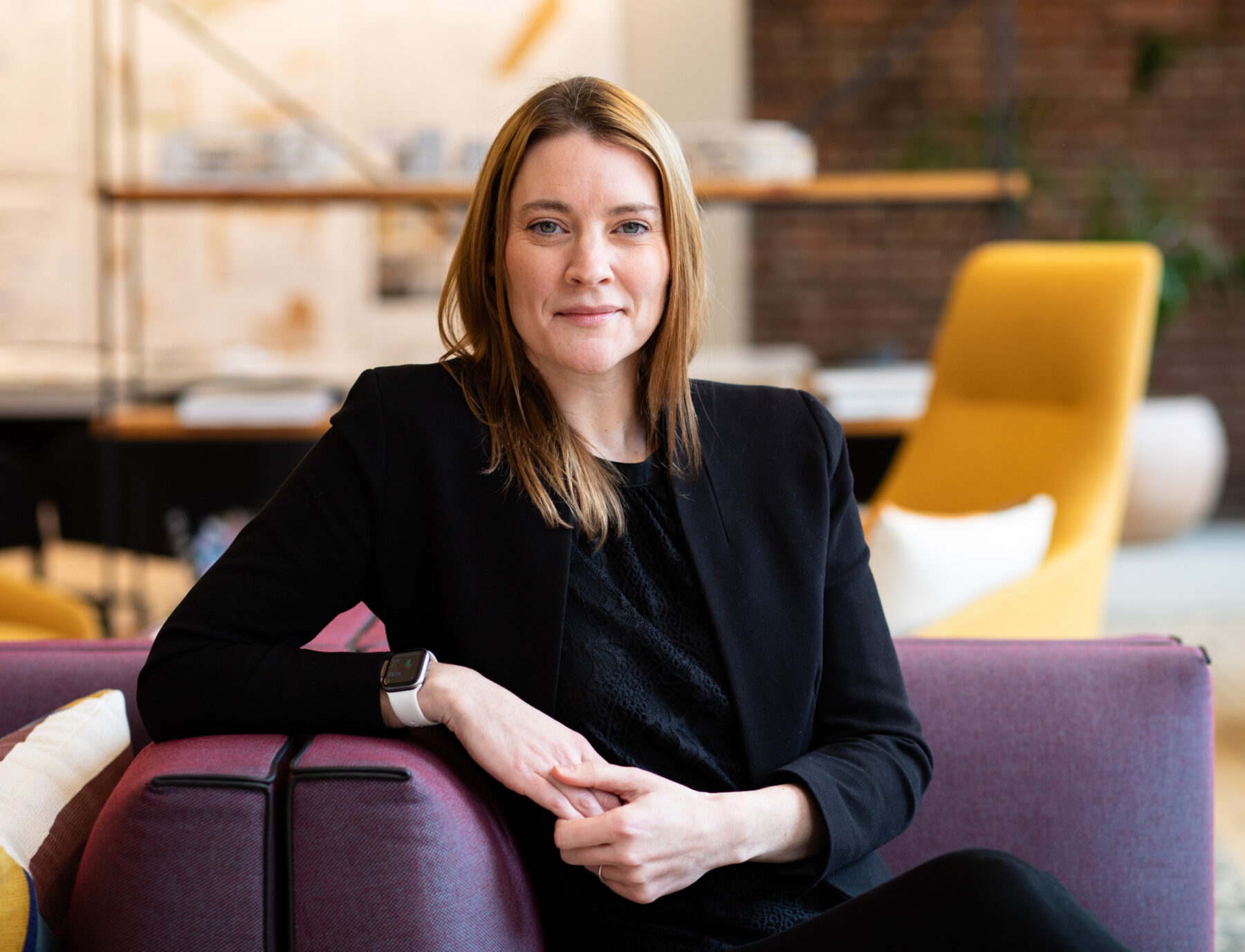
 Sasaki
Sasaki

From sports teams to design teams, Emily Parris is the ultimate all-rounder. Her affinity for athletics from a young age led her to pursue design as a means of bolstering human performance—what began as an interest in creating sportswear led her to designing facilities for athletes and holistic spaces for student wellness and recreation. Her experience in athletics serves as a reminder to strive for a synergy between work and play, rest and rigor in her designs.
In addition to leading complex projects at top universities, Emily plays a crucial role in the Sasaki Foundation, lending her expertise to propel the future generation of architects and designers. Regardless of identity, background, or experience, she strives to make design as inclusive as possible for everyone.
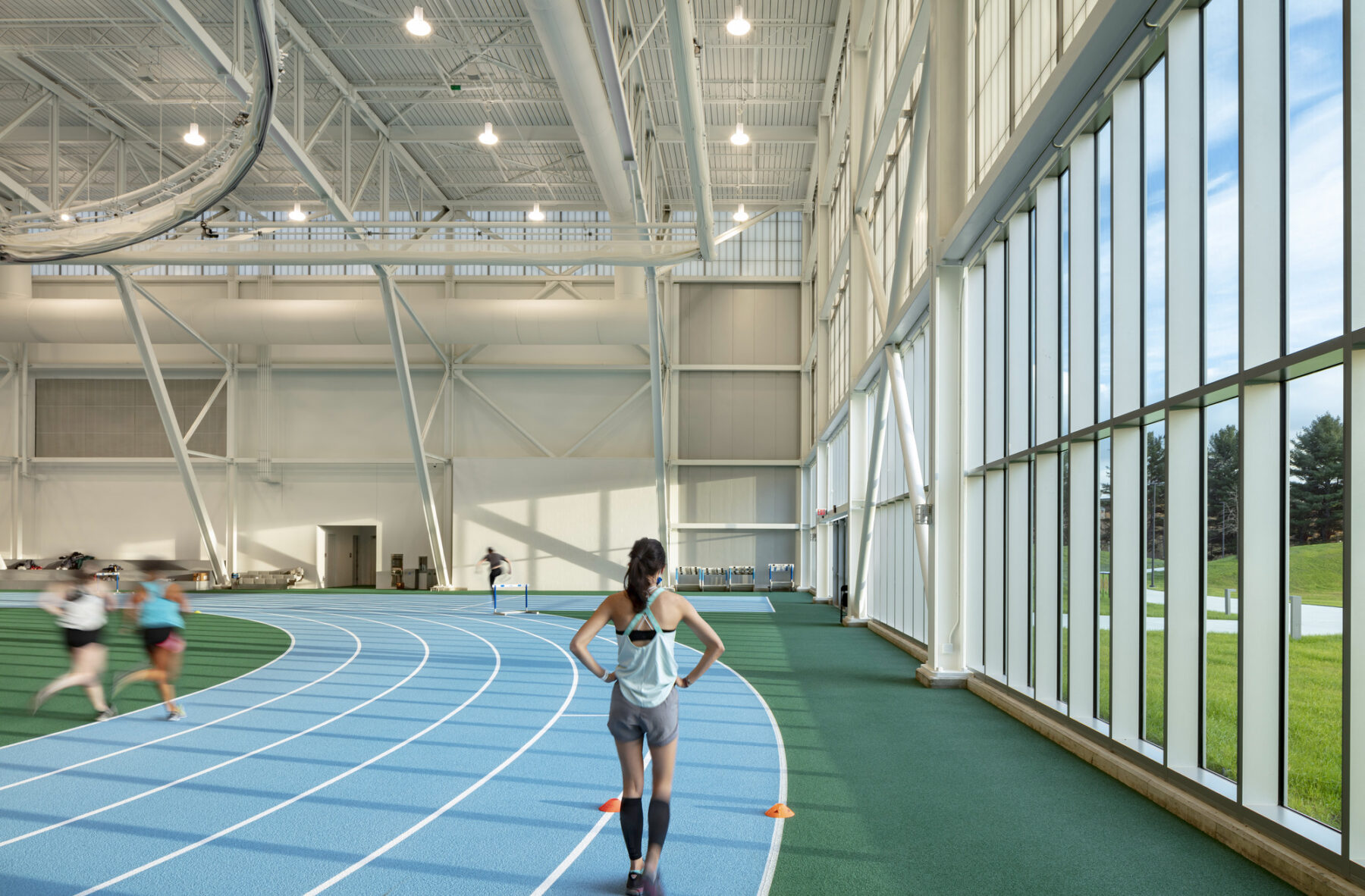
Colby College Harold Alfond Athletics and Recreation Center
I went into architecture school with an interest in industrial design. More specifically, an interest in making sneakers and footwear, which was all driven by this big idea of human performance and what it means to provide somebody with tools that could help them reach their personal best. I was inspired by a great mentor I had throughout high school who said, “If you really want to learn how to design anything, go to architecture school. It’s a rigorous start and you can branch off from there.” So my initial “get into architecture school” drive was to take it elsewhere, but I became inspired with the scale of impact and the possibilities of what architecture could be, and I’m still here and I’m not (yet) making shoes.
What drew me to architecture was the combination of art with the logic of engineering. I loved the intricacies that went into designing a building. By combining my own background in athletics with the skills and perspective I gained in architecture school, I realized I could design spaces that could elevate the individual, the team and the community at the same time. I was fascinated by the idea of accessible, high-performance spaces for athletes that would help them perform better as a team.
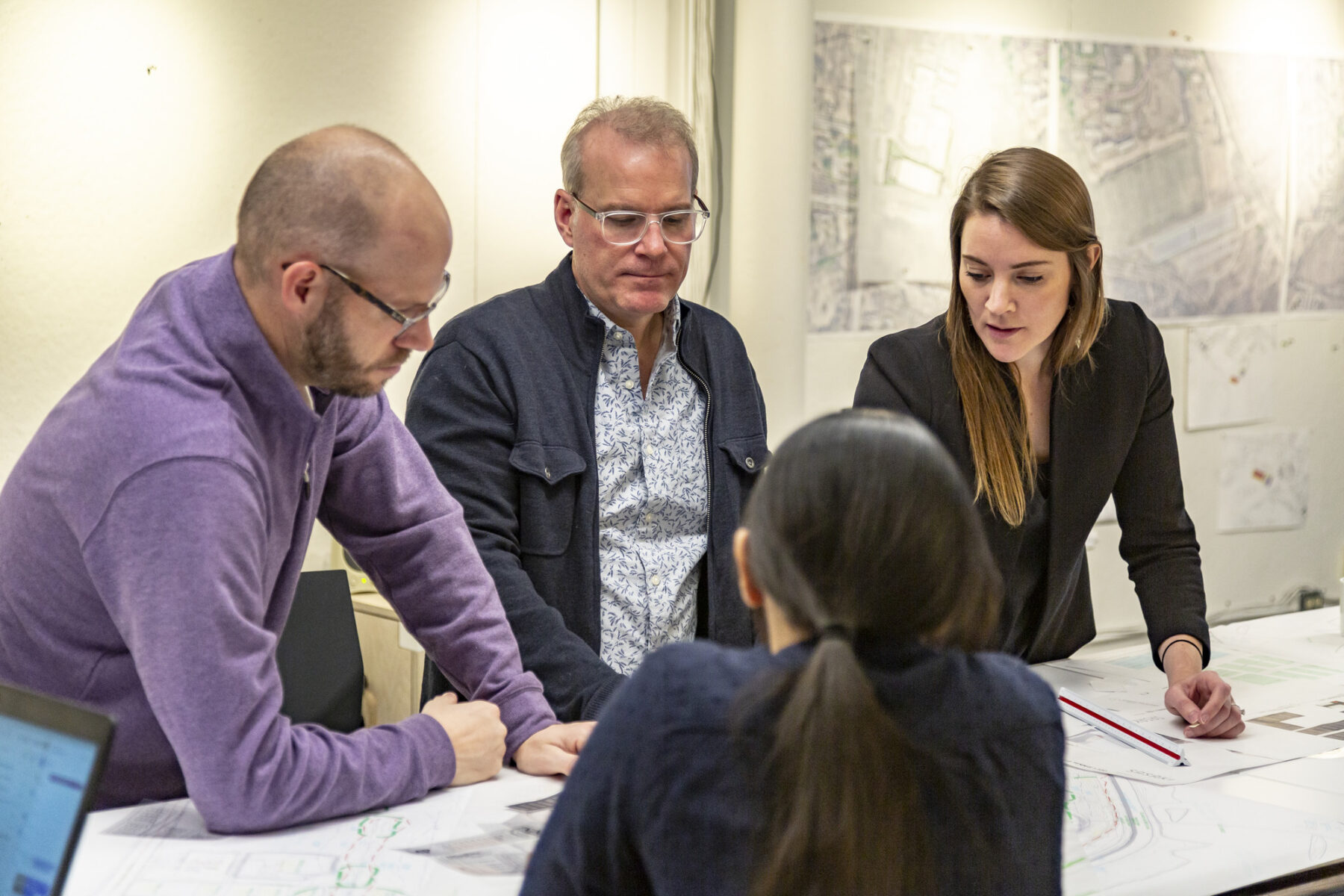
Emily and the Princeton design team meet for a work session.
Growing up I was a bit of an awkward kid, but I found a social network of friendships and self-confidence through sports. I always was able to be part of a team. I played essentially every sport and I played year-round. It was really safe and inclusive place for me.
This meant I spent a lot of time in venues, as a spectator and a player, and I loved that feeling of being a part of something bigger. The energy inside these spaces is exciting, but it wasn’t until I was in architecture school that I realized how powerful they are. I was drawn to the idea that I could design facilities that elevated the experience of the everyday for teams and spectators, so that athletes can perform their best, and the fans can be a part of it, in a space that mirrors and supports the incredible human performance.
When we design a venue, we’re thinking about ways to meet many different needs at the same time. Sometimes, like at Princeton Racquet and Recreation Fieldhouse, that means designing a facility that serves both varsity squash and tennis teams but also creates a place for the entire student body to recreate. I like that overlap—the idea that every day we can witness something incredible and learn from others.
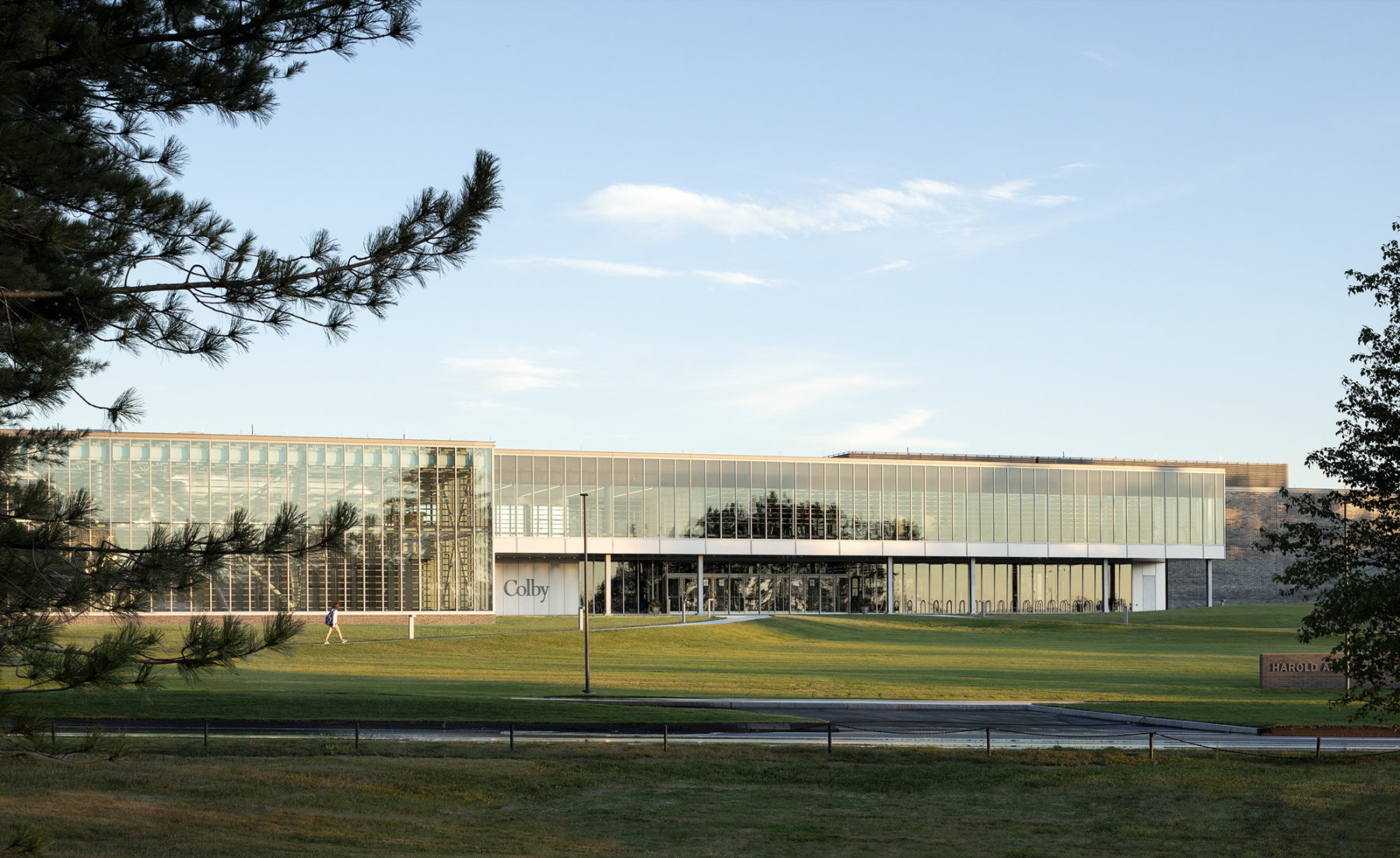
Colby College Harold Alfond Athletics and Recreation Center
I played basketball at Roger Williams, so I’m drawn towards the venues that I most intimately relate to. I joined a small sports studio right out of school and I learned so much about implementation of many different venues in the realm of athletics and recreation.
At Sasaki, Colby College was a good five years of my life and it was my first experience working on every venue simultaneously as new construction. There’s something fascinating about the scale of that building. We did the ice arena, the indoor track with tennis courts, the squash courts, the gymnasium, and the 50-meter pool, all as a cohesive piece of architecture designed specifically around the user experience for the individual and the community. It was such a rewarding process.
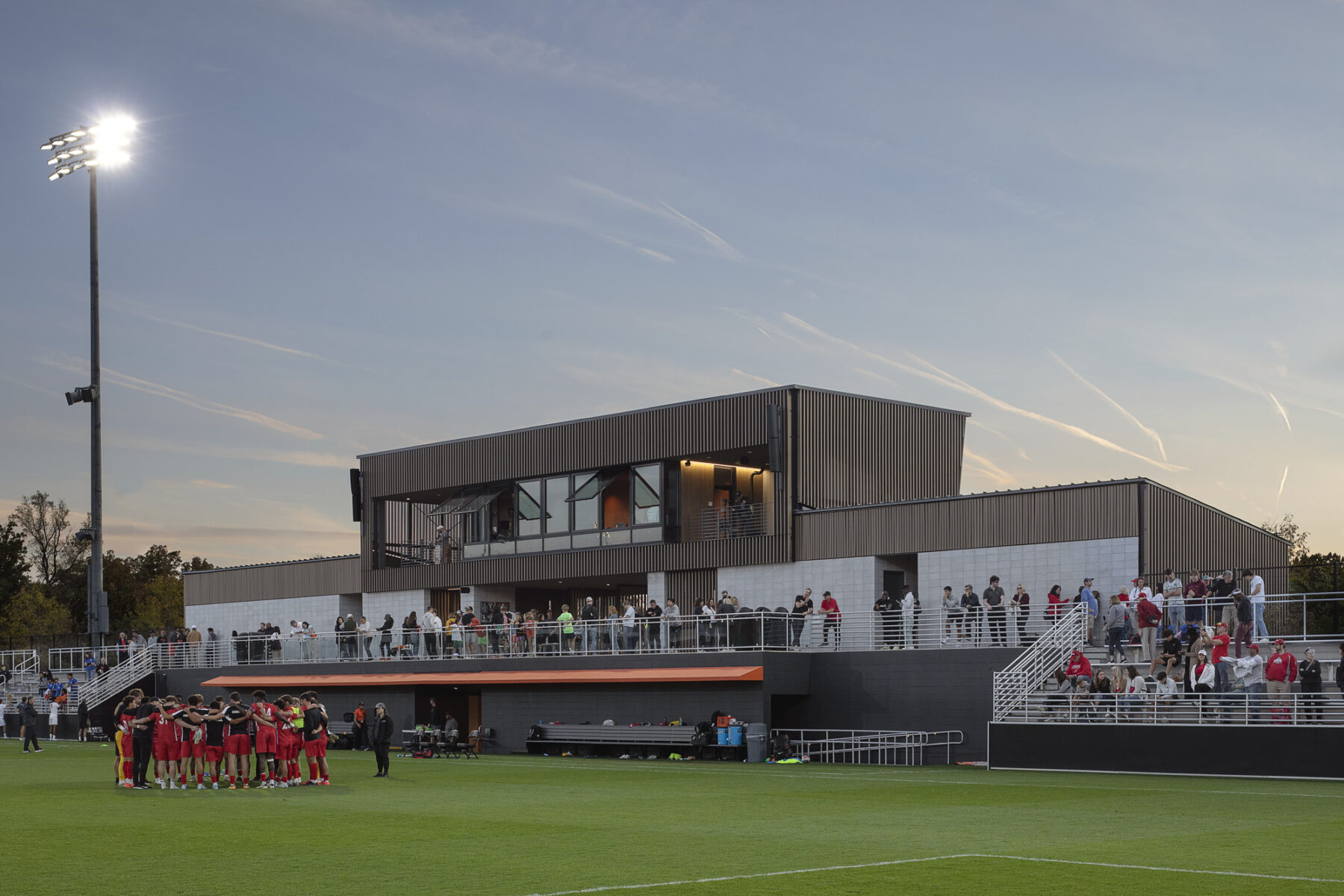
Princeton University’s new soccer stadium.
One of my other favorite projects at Sasaki was at Princeton University. We did the racquet center, which included indoor and outdoor tennis courts, squash courts, strength sports medicine and team locker rooms. We also did their new soccer stadium and practice field, and the softball stadium. The squash and tennis facility, in particular, is cutting edge in terms of the program adjacencies, the quantity and quality of the courts, court technology and the overall spectator experience. It’s now considered one of the best venues in the nation. On projects of that scale you get to learn a lot about the user groups and their values and goals as a program which I really enjoy.
There’s a lot of pressure on student-athletes—I remember having to balance academics with basketball and my social life—so my goal is to design spaces that give student-athletes time back in their day. My first-hand experience helps me ask questions and explore design options that support the well-being of the whole athlete.
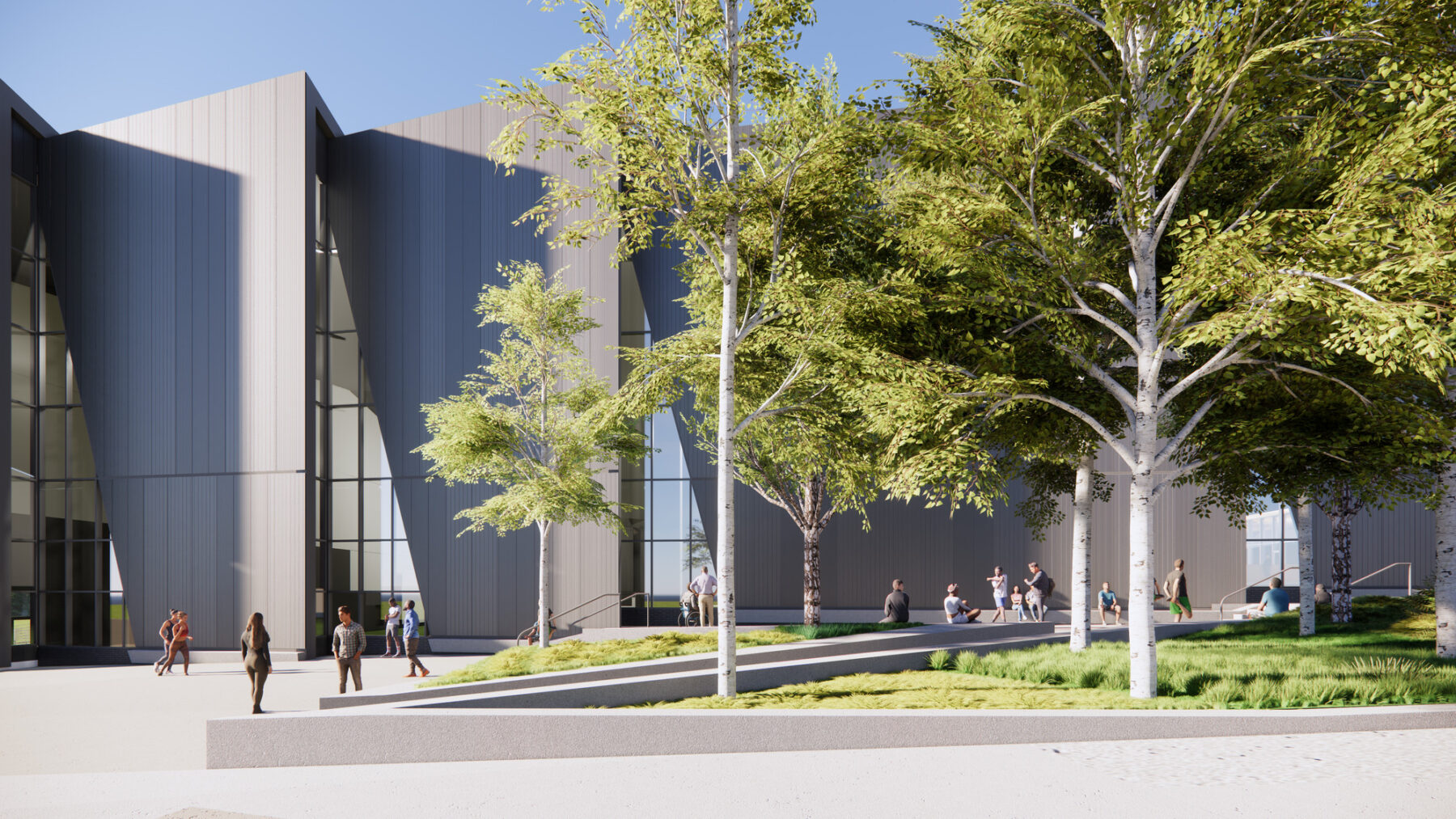
Brown Athletics Indoor Turf Facility
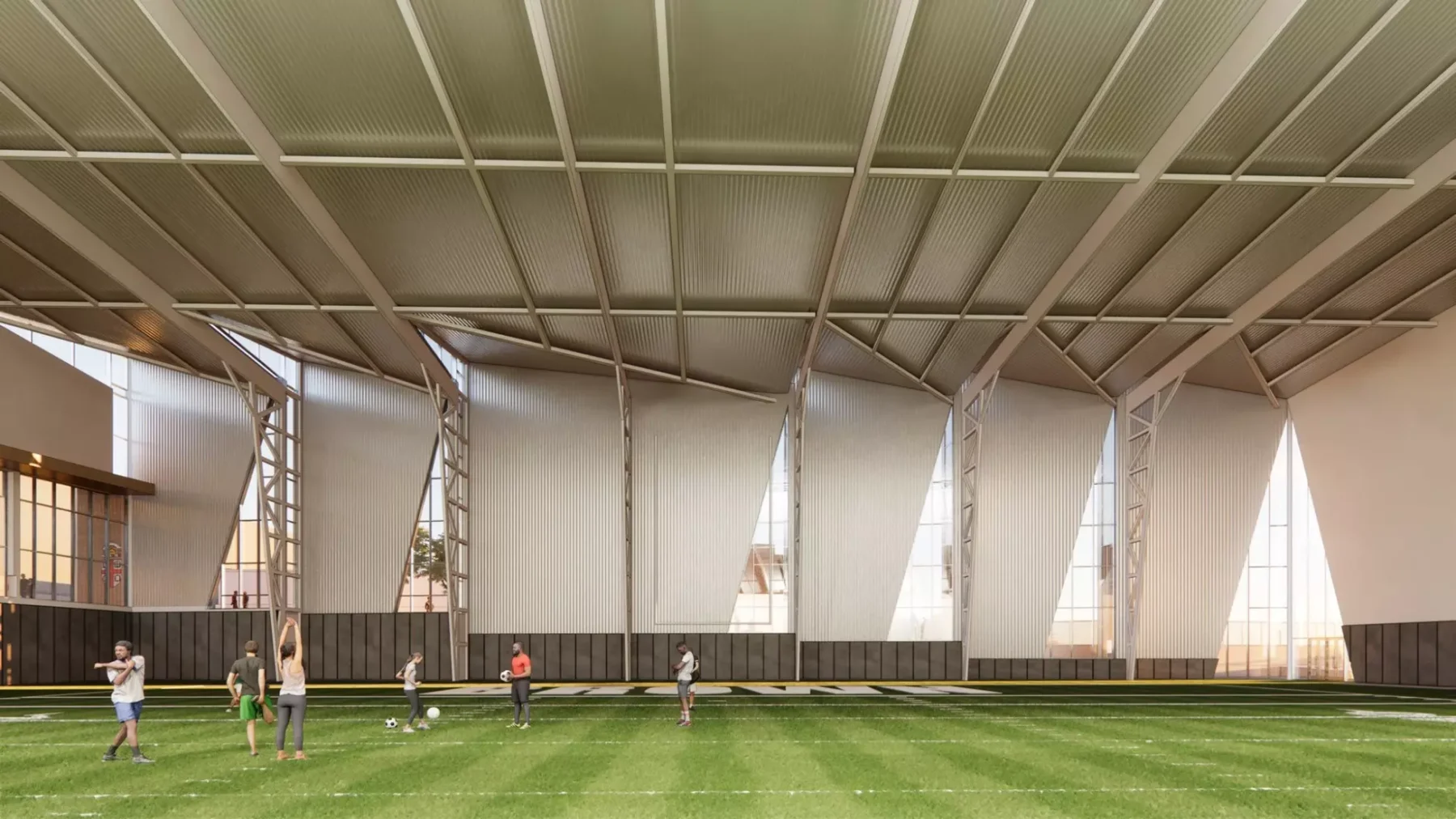
Having an indoor space allows students to train any hour, of any day, of any season, helps optimize convenience and wellbeing. Since injuries are more likely to occur in colder environments, indoor centers are integral for training through colder months while preserving muscle integrity and elasticity.
Brown University, for example, needed an all-season facility for practice and training for field sports. Our cold New England winters meant they couldn’t train outdoors from November to April, which put them at a disadvantage against schools in warmer climates. We worked with them to design a field house for their athletes that could serve all students—the new facility will also expand opportunities for sport clubs, intramural sports and recreation for the general student body.
At Cornell, the new Meinig Fieldhouse is designed around the requirements for hosting indoor D1 lacrosse competitions, but the facility and spaces are open to the campus community most of the time and seen as a hub for recreation and wellness. At both Brown and Cornell, there’s an acknowledgement that physical and mental wellbeing are closely linked, so there are spaces for gathering with friends, recovery, and play.
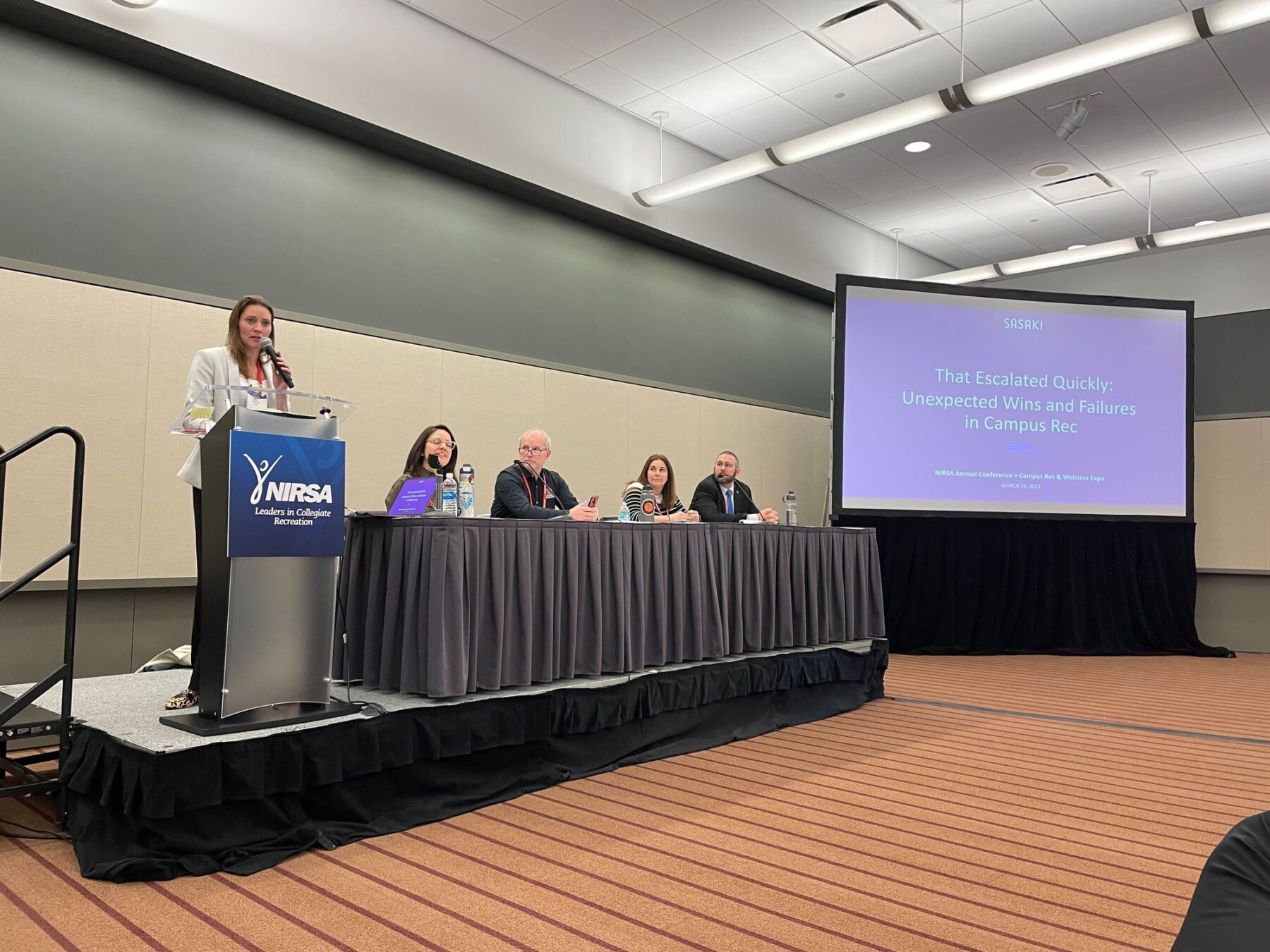
Emily presenting at NIRSA.
From a leadership perspective on a team, you realize what your strengths are and you understand when somebody can contribute more in a particular area. At Sasaki, I’ve found it easy to supplement my strengths with the people I work with, understanding that I’m not going to bring everything and that I have people around me I can learn from. There’s a sense of humility that is taught in a group atmosphere—you learn to pick up where someone needs help and to be selfless.
There’s a common denominator shared between successful sports and design leadership: patience. I’ve learned that you have to know how to motivate people, create an environment where everyone can contribute, but also practice patience as they grow. Some of my best mentors in design and sports have allowed me to figure things out on my own and fail in a safe environment. But they also haven’t been afraid to redirect—or coach me when I needed it. It’s a real balancing act I’ve come to appreciate more and more.
The one that comes to mind most clearly is balance, that architectural perspective of how things move and the hierarchy within space. Embedding a sense of playfulness is a huge one, especially when most athletic and recreational venues have an assumed rigor to them. I believe that as adults in any realm, not just design and architecture, we could all learn a lot from play and keeping things lighthearted.
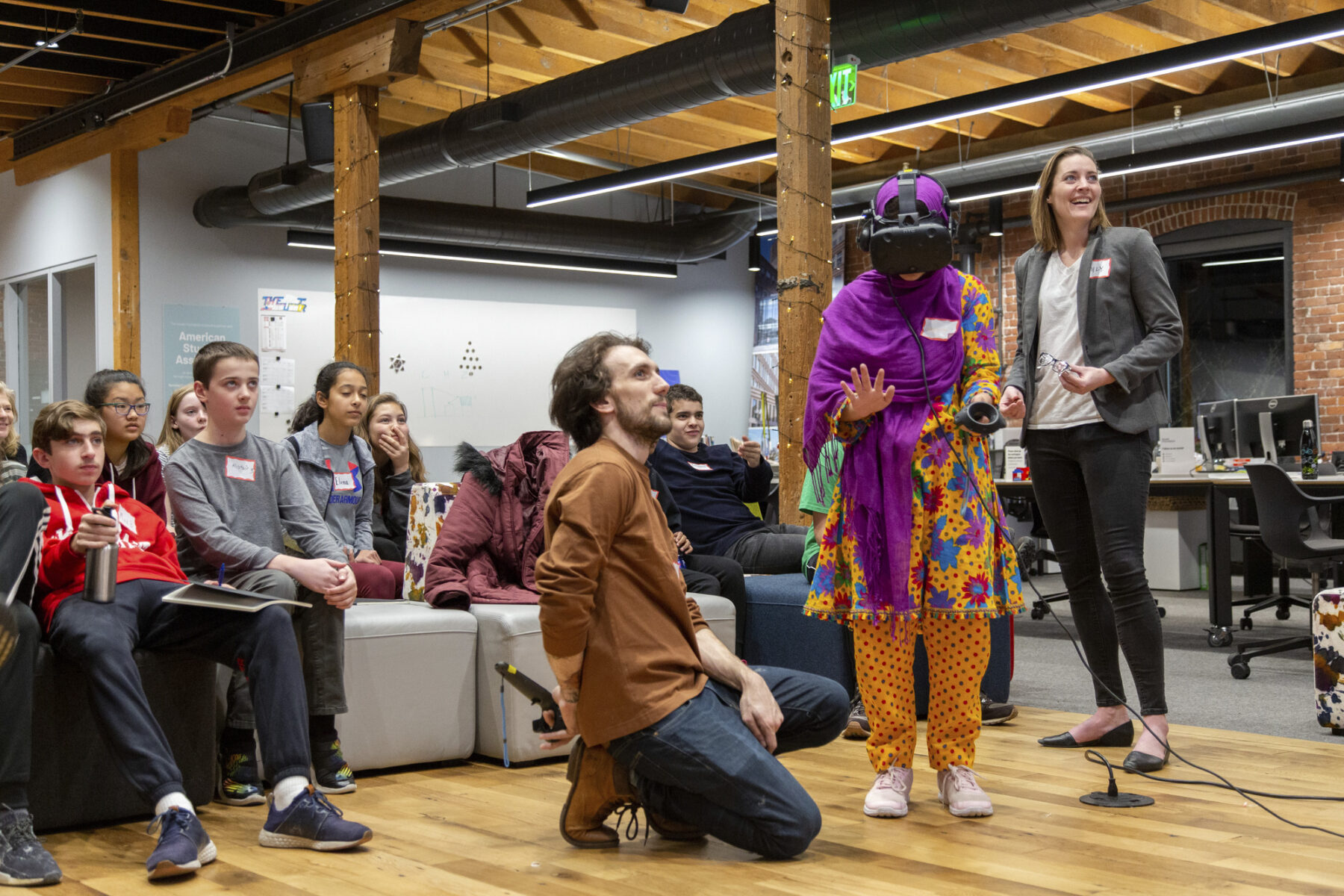
Emily Parris led a virtual reality design charette for students.
I am endlessly grateful to the people that have guided me and taught me things professionally and personally. And so it’s fun to be on the other side of that as a coach or mentor. For me, the Sasaki Foundation’s SEED program gives you that agency to give back. When you’re deep in the rigor of the design realm, it’s refreshing to step out and see it all through somebody else’s eyes. Listening to students who are learning the profession for the first time has always been inspiring and reinvigorating.
Lately, though, I’ve shifted to working with the foundation for fundraising and professional events for diversity in the field. From personal experience, I know that design is better when we have people with diverse perspectives and backgrounds working together. The foundation is doing important work to celebrate and encourage diversity in the field, and I like being able to give back by helping them with these initiatives.
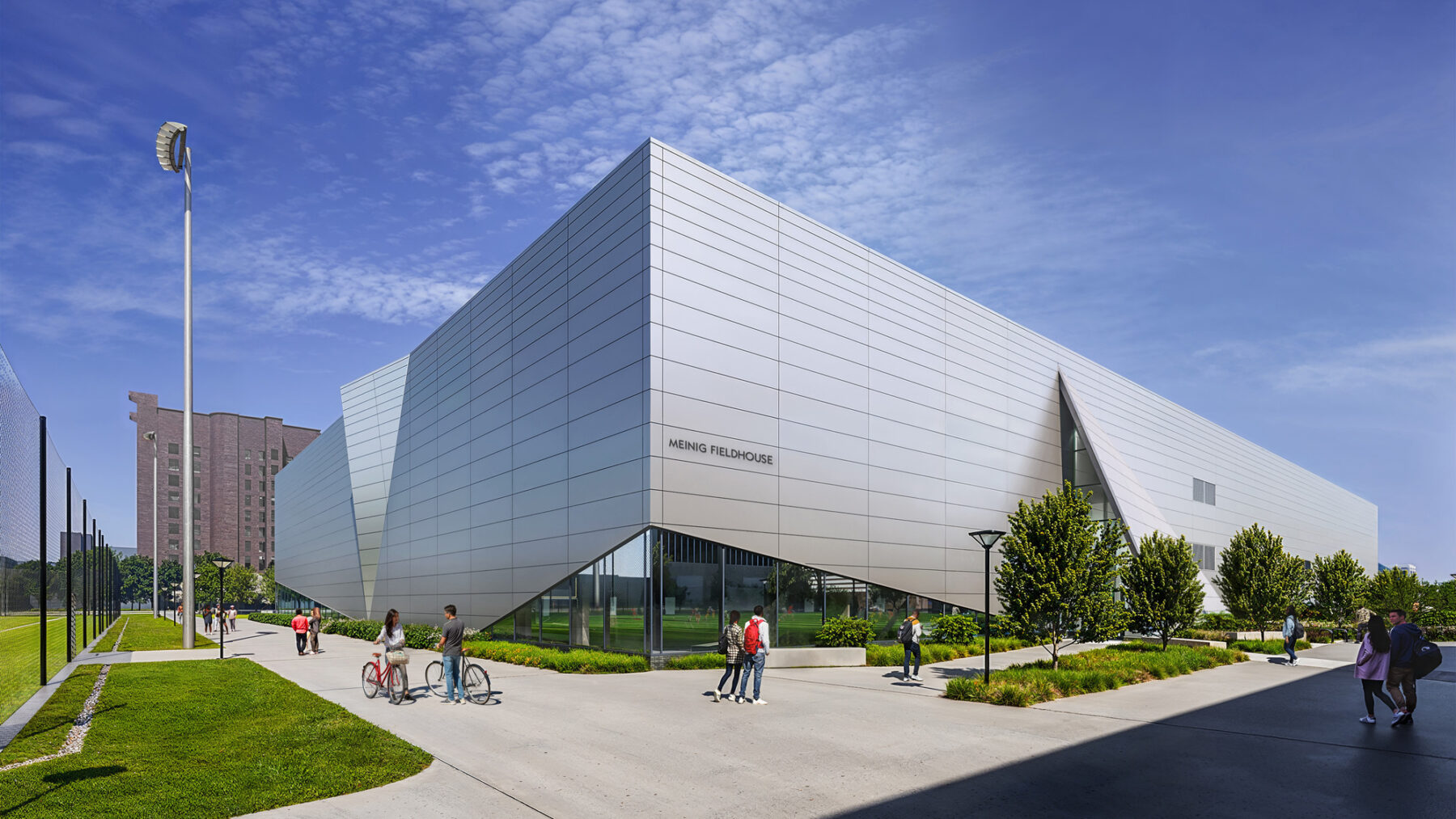
Cornell University’s new Indoor Recreation and Sports Center Design
At the end of the day, it all comes back to people. Whether I’m designing for student-athletes, collaborating with my colleagues, or mentoring through the SEED program, I’m always thinking about how to create spaces and opportunities that help others thrive. I’ve been lucky to have great mentors who believed in me, and now I get to do the same. It’s incredibly rewarding to support the next generation, especially knowing that a healthy, balanced, and human-centered design world is something we build together.